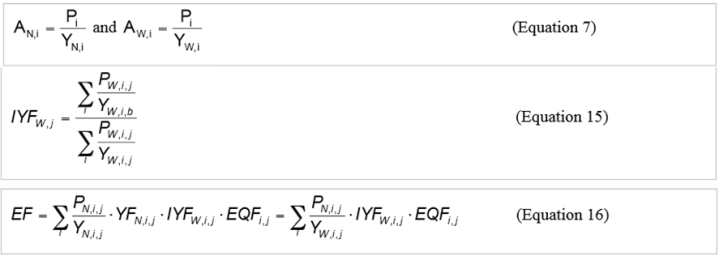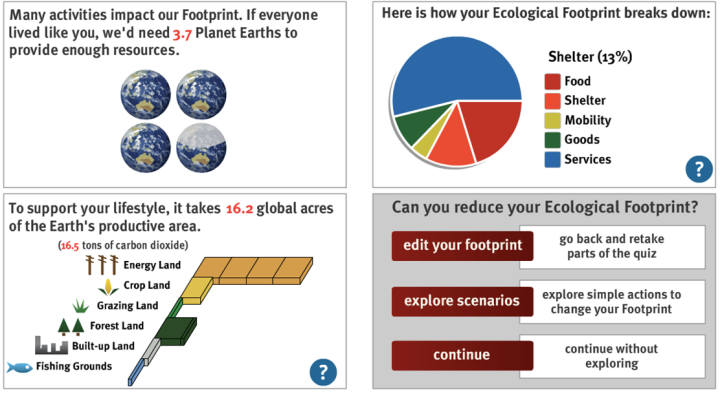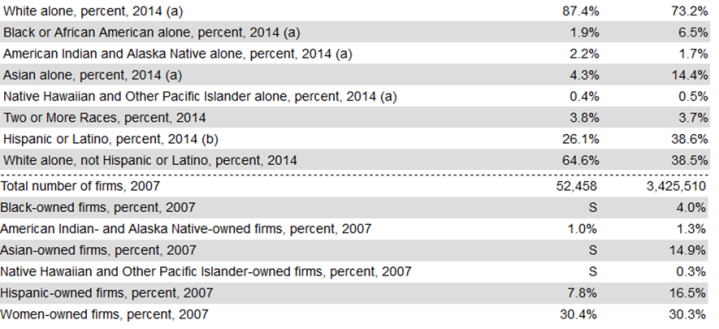All the effort to understand the climate change -its causes, the phenomena itself, and the future scenarios- forces us to think in the world as an entire system. Is remarkable how explicit is the issue of scale in the Intergovernmental Panel on Climate Change 2014 Synthesis Report:
“Climate change has the characteristics of a collective action problem at the global scale, because most GHGs [greenhouse gases] accumulate over time and mix globally, and emissions by any agent (e.g., individual, community, company, country) affect other agents. Effective mitigation will not be achieved if individual agents advance their own interests independently.”
I think it –focused on climate change- redefine the concept of sustainability in its roots: whichever definition we use, there can’t be a sustainable city, region, or country itself. Not if it is part of the global system while the entire global system is unsustainable: there is no ‘closed systems’. In the ecological dimension, there is no escape because ultimately the entire planet is an ecosystem itself. And it seems to be the same in the economic and social dimensions.
Under that viewpoint, I will try to unpack some aspects from the “Sonoma 100% sustainable wine region” program, mentioned in Mathis Wackernagel TEDx talk in 2015, and give some comments about the ‘Ecological Footprint’ concept presented by him.
The key argument of the Global Footprint Network is the measurement: the metrics –“Having a measure, you have a voice”- I totally agree with that, and is a great merit. It is reductionist? Absolutely. Measure, compare, and process data require reductionism. But where I think is the big merit is in their capacity of translate to simple easy-to-understand metrics, the problem of the sustainable development in the global scenario. Is very illustrative the comparison between the equations behind the methodology, and the data that is shown in the Ecological Footprint Calculator.

Some equations in the method for estimating the Ecological Footprint and biocapacity of nations.

http://www.footprintnetwork.org
Simplify and reduce the problem maybe is necessary in order to reach as much audience as possible, but the model should be very explicit and transparent about all the information, all the interactions that is disregarding.
Now, it is based on a very anthropocentric view, measuring the ecosystems exclusively in their productive aspect. This approach is very limited: there is no way to separate or isolate the “available resources”, from the ecosystems that support these resources –like imagining just the edible fishes in an area, without the other animals, algae, microorganisms and interactions between them. It would be remarkable if Global Footprint Network consider in the metrics and methodology, the complexity that is within each ecosystem and the interrelation between them. I doubt it.
I doubt also about the real sustainability of the ‘intensive agriculture’. And the researches that have been made in the field of the ecologically sustainable agriculture –specially the agroecology- support that doubt. Even more, Wackernagel make a direct correlation between this intensive agriculture and the regenerative capacity of the ecosystems.
Sonoma County
I question if “Sonoma 100% sustainable wine region program” just shouldn’t use the word “sustainable”. It is focused mainly in the vineyards and wine production and sustainability is, by far, much more than that. I illustrate that in 3 main points: the scale of the measurement, the leadership of one industry –wine-, and the equity situation in Sonoma.
- Scale and boundaries of the ecological footprint
As I proposed at the beginning, I think we cannot use anymore the concept of sustainable, attached to territorial or administrative boundaries, as a closed system. If we think about “actions”, for sure administrative and territorial boundaries are necessary, but the inputs and outputs have to be measured and tracked –just to illustrate that, let’s say that is much easier to be sustainable in ecological terms, if all the industries that produce what we consume, are in other regions.
Accordingly, is someone measuring the ecological footprint of each wine bottle produced in Sonoma, exported to Europe or Japan? Just the idea of a container full of Sonoma wines crossing the Atlantic in a ship, travelling to France; make me think in high ‘ecological footprint’. Being sold in countries where already there is wine production! I don’t want to say that the frontiers should be close to exportation; but start measuring it.
Californian markets are full with European, Australian, South American wine. Similarly, European markets, where you can find Californian wines sharing the rack with French wines, in the middle of France. As well as many other places in the world. “Buy local” is one of the Californian mantras that I hear permanently. If the Sonoma’s wine industry is part of a global market, the metric will have to be made at that scale: global.
- Centralization in one industry
One of the metrics shown in the program is that vineyards use only the 6% of the land. Everybody agree that the monoculture is unsustainable, therefore Sonoma would be going in the right direction, sharing the territory with other land uses and rural activities. But is not only the land what should be diverse; the economy have to be diverse too. The focus on the wine industry could weak other productive activities –farming, ranching, diary production, among others- revoking their representativeness in the decision making.
The decision-making of a sustainable program shouldn’t be leaded by one-product company’s aggrupation. It should integrate all sectors: farmers, fishers, urban services, among others.
- The equity is a ‘must’
It is difficult to advocate for the social dimension of the sustainability, within a program leaded by the private sector. The civic participation has to be in the roots of any program or plan to be implemented. In a county with a 87.4% of white population –some of them, Latino-white population-, and where the minorities ownership is very low from the California average, there is still a great deal of work to be done in terms of social equity.
 http://quickfacts.census.gov/qfd/states/06/06097.html
http://quickfacts.census.gov/qfd/states/06/06097.html
“The top 1 percent of households in Sonoma County saw their average annual income rise 40.8 percent between 1989 and 2013, while the remaining 99 percent of households saw their average incomes decline 10.4 percent during the same period” (www.pressdemocrat.com) Maybe that requires, again, a greater scale of metrics and actions: look at the entire bay area population and make questions about equity, environmental justice, and well-being.
Wine companies are in their right –and should- to implement more ecological practices, think in long term, incorporate good practices with their workers. But if these actions want to be conducted in a sustainable path, will have to be part of a bigger and much more comprehensive plan or initiative. Otherwise, it would be more responsible to find an alternative to the word “Sustainable”.
References:
IPCC, 2014: Climate Change 2014: Synthesis Report. Contribution of Working Groups I, II and III to the Fifth Assessment Report of the Intergovernmental Panel on Climate Change [Core Writing Team, R.K. Pachauri and L.A. Meyer (eds.)]. IPCC, Geneva, Switzerland, 151 pp.
http://edb.sonoma-county.org/documents/2014/wine_industry_insider_2013.pdf
http://www.latimes.com/business/la-fi-wineries-water-20150831-story.html
http://www.porwine.com/wine-news/sonoma-county-grape-growers-release-100-year-sustainability-plan
http://www.pressdemocrat.com/news/5257647-181/income-gap-growing-in-sonoma
http://www.sonomawikne.com/blog/sonoma-county-become-nations-first-100-sustainable-wine-region
You must be logged in to post a comment.